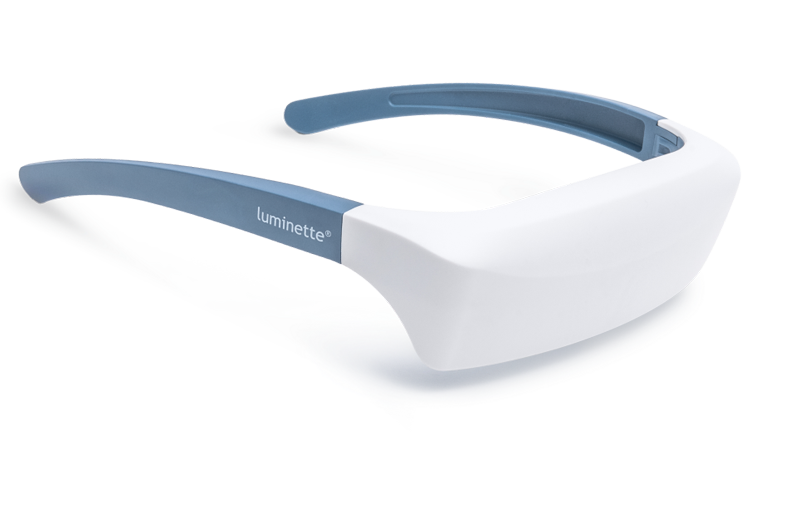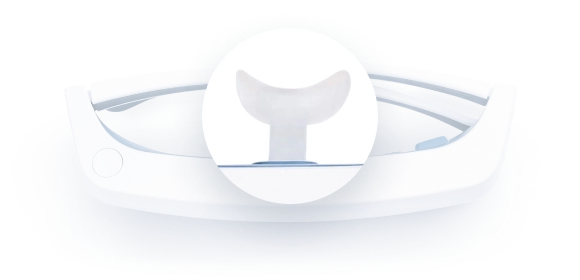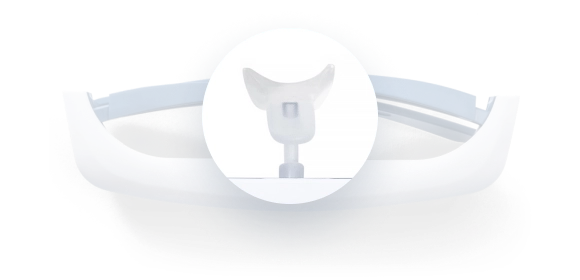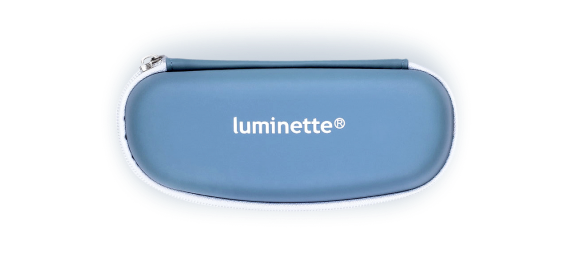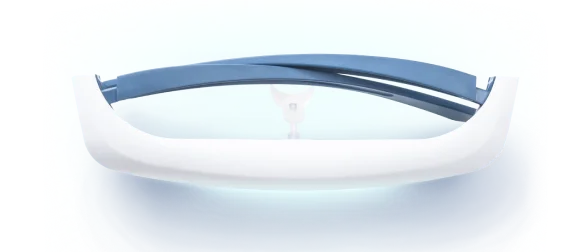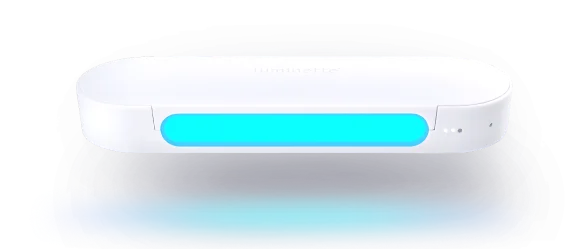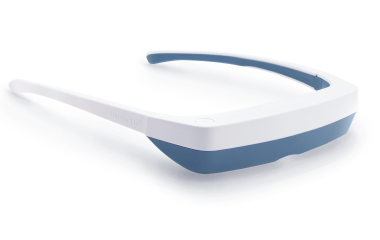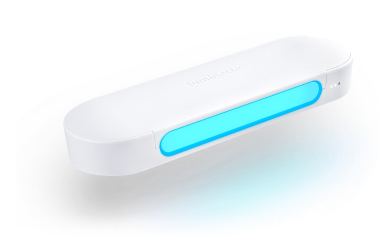Australia’s massive landmass and remote position make it a hotspot for long‑haul travel and with that comes the challenge of jet lag. Crossing two, five, or even ten time zones can throw your body clock completely out of sync, leaving you drained, disoriented, and struggling to adapt to local schedules.
What Is Jet Lag?
Jet lag is essentially the jet lag effect, a mismatch between your body’s internal clock and the local time at your destination. Your circadian rhythm expects daylight and darkness based on where you took off, so when you cross several time zones, that rhythm stays stuck on “home” time. As a result, you might lie awake at night, struggle to wake up in the morning, and even see your appetite and bathroom schedule go haywire. Typical signs of this effect include deep fatigue, restless insomnia, irritability, pounding headaches, and upset digestion. By understanding the jet lag effect, you can better tackle it with strategies like timed light exposure, meal adjustments, and gradual schedule shifts.
Why Jet Lag Is a Common Issue for Travelers to and from Australia
-
Huge Time Differences: A flight from Sydney to London means resetting your clock by ten hours; Melbourne to Los Angeles flips you back by seventeen. Such dramatic shifts demand a big circadian adjustment.
-
Domestic Spans: Even within Australia, flying from Perth to Brisbane requires a two‑hour reset, enough to disrupt morning routines and afternoon productivity.
-
Long Flight Durations: Many Aussie routes involve 14‑ to 20‑hour journeys with stopovers, extending the window of sleep‑wake confusion.
-
Cross‑Hemisphere Travel: Moving between northern and southern hemispheres forces your body to swap its seasons overnight from summer days to winter nights or vice versa.
-
Work and Leisure Schedules: Business travelers face tight meeting timetables after arrival, while holidaymakers want to enjoy mornings on the beach; both scenarios pressure you to adapt faster than your body clock allows.
Understanding these hurdles is the first step toward beating jet lag: with targeted strategies like light therapy, meal timing, and pre‑flight schedule shifts, you can shrink that adjustment period and get back to feeling yourself, whether you’re down under or up in the sky.

How Jet Lag Affects Travelers Between Australia and Other Countries
Travelers flying into or out of Australia routinely cross multiple time zones, which can leave your body clock confused and your energy levels in the lurch. The more hours you leap forward or backward, the tougher it becomes for your internal rhythm to catch up, leading to fatigue, sleep disturbances, and a general sense of “off‑ness” that can linger for days.
Jet Lag From Australia to the UK
A direct flight from Sydney to London spans ten hours ahead, meaning you’re suddenly living a day behind. When you arrive, your body still thinks it’s mid‑afternoon back home, so you may struggle to stay awake in British daylight and find yourself wide awake at midnight. Expect at least four to six days to feel fully adjusted, and consider breaking up the trip with a stopover or using morning light exposure at your destination to nudge your clock forward faster.
Jet Lag From the UK to Australia
Flying westward from London to Melbourne means jumping forward by ten hours, an even tougher shift for most people. You’ll likely feel wide‑awake in the early hours and groggy well into the afternoon. To ease this, expose yourself to bright morning light in Australia to anchor your new wake time, and hold off on caffeine late in your first evenings. Most travelers regain a normal routine after roughly five days.
Jet Lag From Australia to the USA
Heading east from Melbourne to Los Angeles shuttles you back seventeen hours, almost a full day. Your body may wake up just as locals are heading to bed, and you’ll drag through long American afternoons. Strategies like using blue‑enriched light in the U.S. mornings and wearing an eye‑mask during daylight sleep can cut recovery down to five or six days, rather than dragging on for a week or more.
Jet Lag From Europe to Australia
Travelers from Paris, Rome, or Berlin to Sydney face a ten‑ to eleven‑hour jump forward. You might arrive feeling alert right before dawn, only to slump into exhaustion as local evening falls. Splitting your journey with a stop in the Middle East can ease the transition, but if you’re flying nonstop, aim for timed light therapy sessions, morning exposure on arrival, and blackout curtains for daytime sleep to sync your clock in about four or five days.

Strategies to Prevent and Reduce Jet Lag
Flattening out the adjustment curve means planning ahead and leaning on your body’s natural cues. Below are proven tactics to minimize the disruption of long‑haul travel and help you feel grounded in your destination’s time zone faster.
Start your adaptation before you travel by gradually shifting sleep and meal times toward your destination’s schedule—move your bedtime and wake-up by 30–60 minutes each day for a few days. Once aboard, stay hydrated and avoid alcohol or heavy meals, which can worsen fatigue and digestive upset. Upon arrival, use light to your advantage: expose yourself to bright, natural or simulated daylight in the local morning hours to signal “wake up” to your brain, and seek darkness (or wear an eye mask) when it’s time to rest. A small dose of melatonin, taken at your new bedtime, can further reinforce the shift. Finally, fit in light exercise like a brisk walk or gentle stretching-to boost circulation and help your body clock recalibrate.
|
Strategy |
What to Do |
Why It Helps |
|
Gradual Schedule Shift |
Move sleep/wake times 30–60 min toward your target |
Eases circadian adjustment by avoiding a sudden jump |
|
Timed Light Exposure |
Morning light at destination; evening darkness |
Resets your internal clock via melatonin regulation |
|
Melatonin Supplementation |
Reinforces sleep signals and accelerates sleep onset |
|
|
Hydration & Light Eating |
Drink water; choose light, balanced meals |
Prevents dehydration and digestive discomfort |
|
Strategic Caffeine Use |
Caffeine only in early local morning |
Boosts alertness without disrupting nighttime sleep |
|
Light Physical Activity |
10–20 min walk or stretching after arrival |
Improves circulation and signals daytime activity to your brain |
By weaving these tactics into your travel routine, you’ll cut days off your recovery time and arrive in peak form, ready to explore, work, or relax without the drag of jet lag holding you back.
Adjusting Your Sleep Schedule Before Travel
Start syncing your body clock to your destination up to a week before departure. If you’re headed eastward, try going to bed and waking up 30–60 minutes earlier each night; if you’re flying west, shift your schedule later by the same increment. Gradual changes give your circadian rhythm time to adapt, so when you actually sit on that plane, your body is already partway aligned. On travel day, resist the urge to nap immediately upon arrival instead, push through to the local evening to lock in your new sleep–wake pattern.
Importance of Hydration and Nutrition
Dehydration and heavy meals can both magnify fatigue and digestive woes when you switch time zones. Aim to drink plenty of water before, during, and after your flight; skip the alcohol and caffeine, which dehydrate you and disrupt sleep. Eat light, protein‑rich meals at times that match your arrival time zone: a morning arrival calls for a healthy breakfast, while a nighttime landing deserves a modest, easily digestible meal. This consistency helps anchor your body’s internal cues and keeps energy levels steadier as you adjust.
Role of Melatonin for Jet Lag in Australia
Melatonin, your natural “sleep hormone,” can be a powerful ally against the jet lag effect. In Australia, where long flights often land you well outside normal nighttime hours, a small dose (0.5–3 mg) taken 30–60 minutes before your target bedtime can signal your brain that it’s time to rest. Choose a reliably pure supplement and start with the low end of the dose range; higher amounts don’t necessarily speed adaptation and may leave you groggy the next day. As you use melatonin, pair it with controlled light exposure to reinforce your new schedule.
Using Light Therapy by Luminette to Reset Your Biological Clock
Light is the master cue for your circadian rhythm, and Luminette glasses deliver therapeutic brightness directly to your eyes without UV to help reset your biological clock. Whether you arrive at sunrise or stumble in at midnight, a 20‑minute session with Luminette in your new “morning” squeezes daylight signals straight into your peripheral vision. That powerful cue tells your brain to produce wake‑promoting hormones and suppress sleep‑inducing melatonin, speeding your adjustment to local time. Over the next few days, regular morning wear keeps reinforcing that shift, so you’ll find yourself naturally waking and sleeping on schedule, no matter how far you’ve traveled.
How Light Therapy by Luminette Helps Beat Jet Lag
When you step off the plane and local time feels upside down, Luminette’s jet lag glasses can straighten things out fast. These wraparound light-therapy frames deliver the right spectrum and intensity directly into your peripheral vision, just like a sunrise on demand.
-
Hands‑Free Convenience: Simply pop on your jet lag glasses each morning at your destination, and go about your routine—read, check email, or have breakfast—while the gentle glow resets your internal clock.
-
Travel‑Ready Design: Lightweight and battery‑operated, Luminette glasses slip easily into carry‑on luggage. No more hunting for outlets or awkwardly leaning over a lamp; you get therapeutic light wherever you land.
-
Precision Timing: Built‑in timers guide you through the ideal 20‑minute dose, so you never under‑ or over‑treat. That consistency helps your circadian rhythm lock into the new time zone in just a couple of days.
-
Rapid Adjustment: By delivering a simulated dawn at your new “morning,” these light‑therapy glasses tell your brain to boost alertness and suppress melatonin, cutting jet lag recovery time by up to half.
With Luminette’s jet lag glasses, you’ll go from exhausted traveler to local-time achiever, ready to explore, work, or relax without the drag of delayed body clocks.
Using Luminette Glasses During and After Travel
Slip your Luminette jet lag glasses on as soon as you wake up in your destination’s local morning. Even if your body still thinks it’s home time, a 20‑minute session in those first few hours sends a clear “wake up” signal to your brain, helping to suppress melatonin and boost alertness. On travel days, wear them during breakfast or while checking emails in your hotel. After a red‑eye flight, a quick pre‑meeting session can sharpen focus and erase grogginess. When it’s time to sleep, stow the glasses and embrace darkness this contrast between bright mornings and dark evenings speeds realignment of your sleep–wake cycle.
Tips for Optimal Use of Luminette for Jet Lag Recovery
Consistent Timing: Use your glasses at roughly the same local “morning” time each day to reinforce the new schedule.
Combine with Natural Light: Whenever possible, follow your Luminette session by stepping outside; natural daylight strengthens the reset.
Stay Active: A brisk walk or gentle stretching right after treatment helps circulate signal‑boosting hormones.
Avoid Evening Exposure: Don’t use your glasses within three hours of bedtime; late light can delay sleep onset.
Charge Before Departure: Pack your Luminette fully charged or with fresh batteries so you can start your regimen immediately.
Adjust Duration Gradually: If you travel across many zones, start with 15‑minute sessions and increase to 20 minutes as your body acclimates.
By making Luminette part of both your travel routine and first days on the ground, you’ll harness targeted light cues to overcome the jet lag effect faster and keep your energy and adventure on track.
Devices for Light Therapy
Finding the right tool is key to making light therapy a seamless part of your day. Below, you’ll discover four device categories, each tailored to different routines and goals, so you can pick the one that fits your lifestyle and wellness needs.
Luminette Light Therapy Glasses
These sleek, wearable glasses beam full‑spectrum light straight into your peripheral vision, delivering roughly 1,000 lux at eye level without UV exposure. Designed for hands‑free use, Luminette glasses let you read, work, or sip your morning coffee while your brain soaks up therapeutic brightness. Their wraparound shape minimizes glare, and an integrated timer ensures you get the ideal 20‑minute dose. Many users find this approach feels more natural and more convenient than staring at a stationary lamp.
Luminette Light Therapy Lamps
Combining elegant design with clinical performance, Luminette’s desk lamps pump out a robust 10,000 lux of glare‑free light. A built‑in diffuser softens hotspots, while a pivoting head and height‑adjustable stand help you find the perfect angle. One‑touch controls start, pause, or end your session, and a subtle progress indicator keeps you on track. Whether you place it beside your bed or on your work desk, this lamp brings reliable, research‑backed light therapy into any room.
How Long Does Jet Lag Last for Australian Travelers?
Jet lag isn’t a one‑size‑fits‑all experience; its duration hinges on how many time zones you cross, the direction of travel, and how quickly you help your body adapt. Here’s a rundown of what most Australians can expect when flying to and from key destinations.
Typical Duration of Jet Lag From Australia to the UK
Flying east from Sydney to London means jumping your clock nearly ten hours forward. You’ll probably feel out of sync for four to six days: mornings back home feel like late evenings abroad, and your body fights to stay awake when locals breakfast. To speed recovery, expose yourself to bright light on arrival and resist the urge to nap until the local evening.
Typical Duration of Jet Lag From the UK to Australia
Traveling westward London to Melbourne shifts you ten hours ahead, making mornings feel like midnight and evenings arrive too soon. Most people see improvement within five days, though you may still battle mid‑afternoon slumps until you’ve been on local time for about a week. Staying active in daylight and wearing light‑blocking glasses before your new bedtime will help your body clock catch up faster.
Typical Duration of Jet Lag From Australia to the USA
A trip from Melbourne to Los Angeles sends you seventeen hours back, essentially “losing” almost a full day. In practice, you’ll likely need six to eight days to fully adjust. Early‑morning light therapy and strict sleep scheduling can shave a day or two off this timeline. Until then, expect groggy afternoons and early‑morning wakeups until your rhythm realigns.
Typical Duration of Jet Lag From the USA to Australia
Returning east, say, from New York to Brisbane, pushes your clock ahead by fourteen hours. You might feel jet‑lagged for five to seven days: sleepy at local dawn and wired come dusk. To accelerate adaptation, use blue‑enriched light therapy in the new mornings and keep evening environments dim and device‑free. With consistent routines, most travelers find their energy levels stabilize in about a week.
FAQ
Is jet lag worse going to or from Australia from the UK?
Flying east (Australia to the UK) usually feels harder on your body clock than flying west (UK to Australia), because advancing your internal rhythm is more challenging than delaying it.
How long does jet lag last from Australia to the UK?
Most travelers experience jet lag for about four to six days after flying from Australia to the UK.
How long does jet lag last from the UK to Australia?
Recovery typically takes around five to seven days when flying westward from the UK back to Australia.
How to avoid jet lag traveling from Australia to the UK?
Shift your sleep and meal times gradually before departure, stay hydrated, use morning light exposure (natural or via therapy glasses), and limit caffeine.
How does Light Therapy by Luminette help with jet lag recovery?
Luminette’s jet lag glasses deliver precise, full‐spectrum light to your peripheral vision at your new local “morning,” suppressing melatonin and realigning your circadian rhythm more quickly.



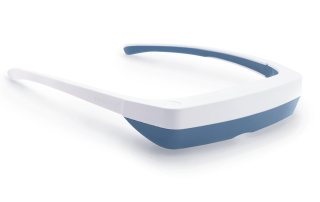

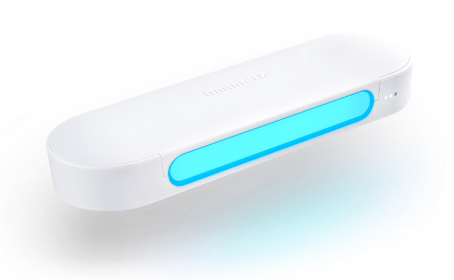
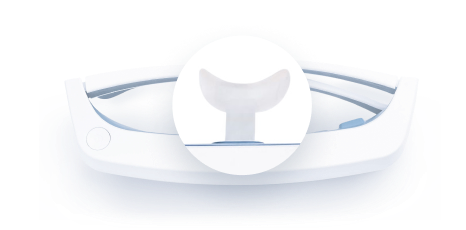
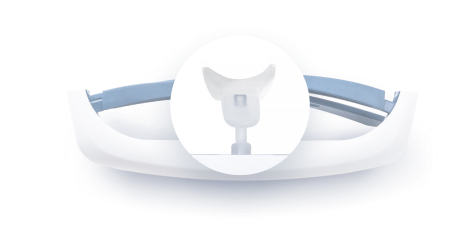
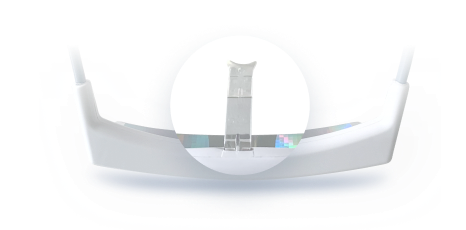
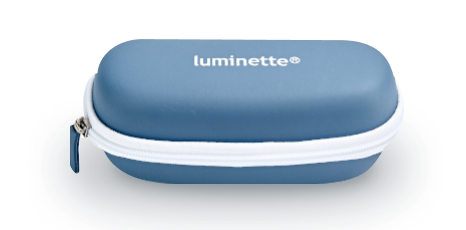
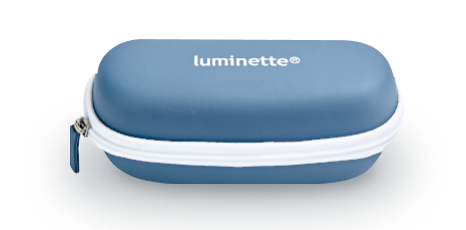











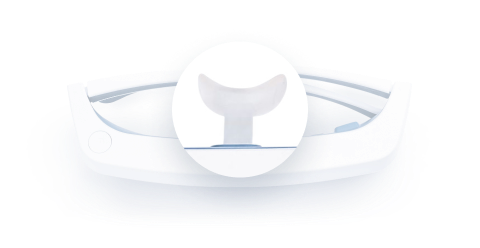
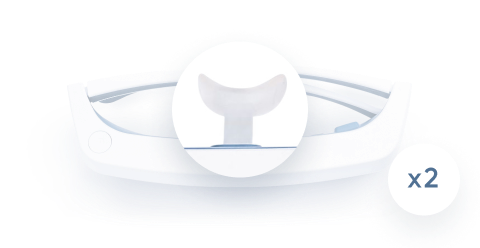
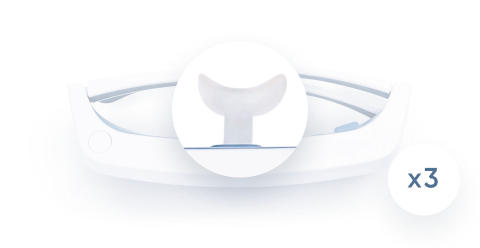
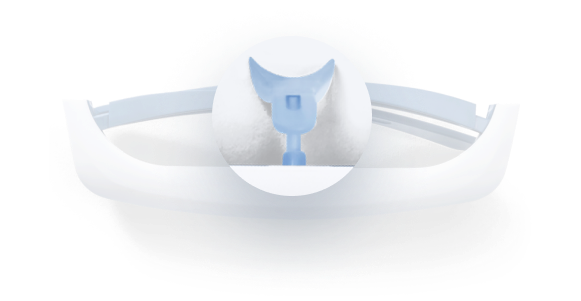
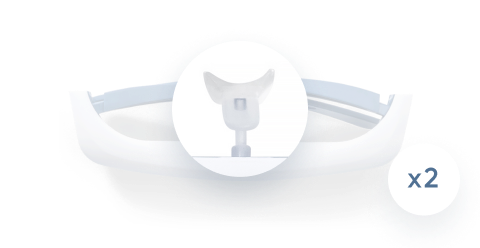
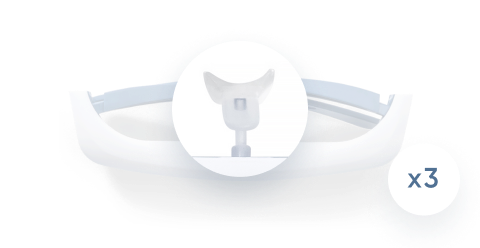



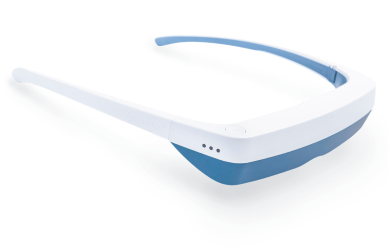

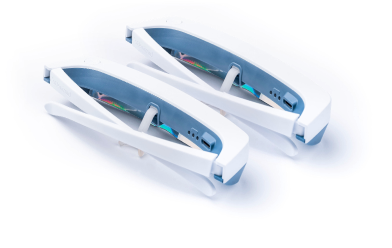
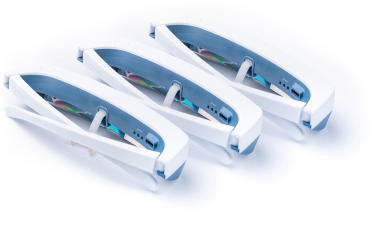

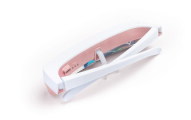
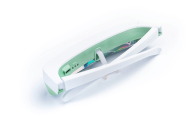
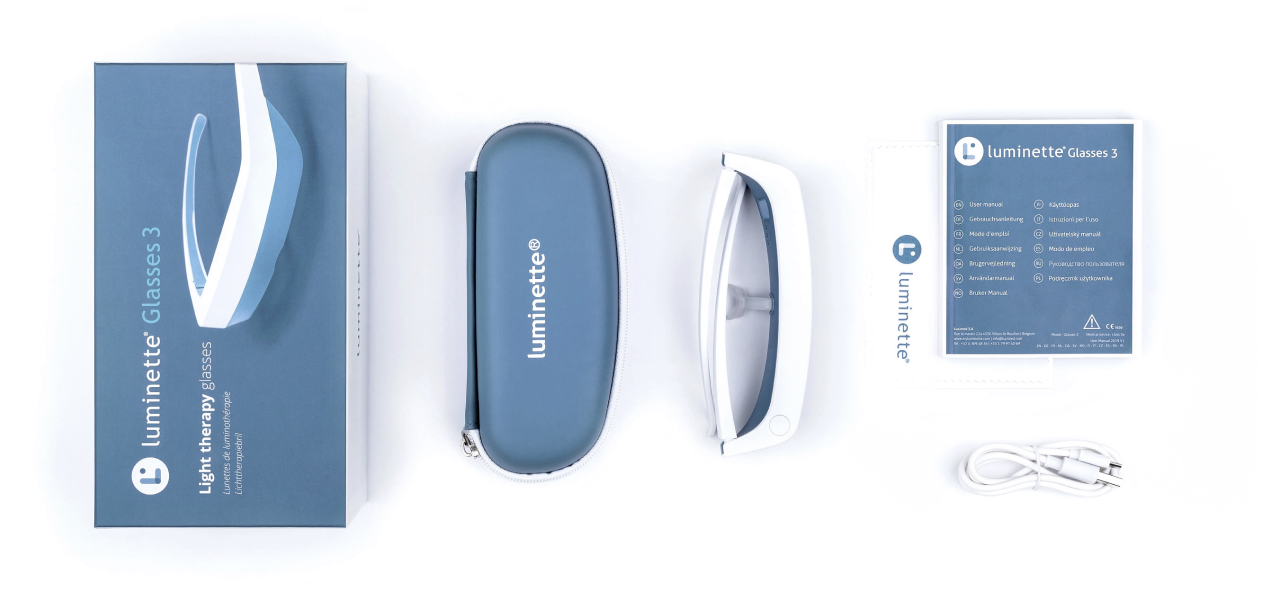

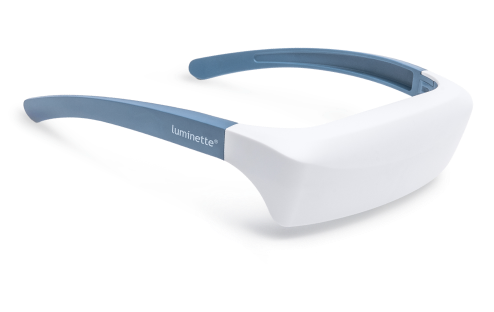
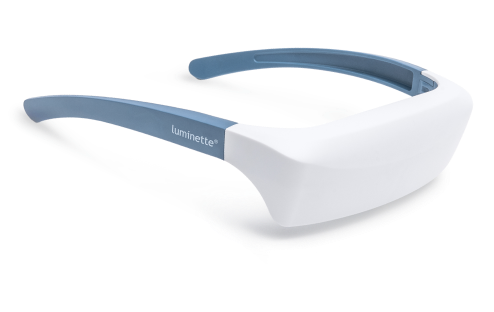
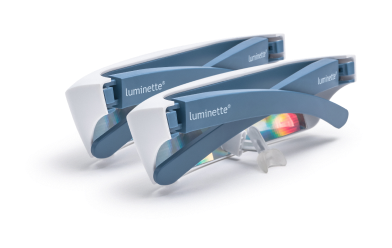

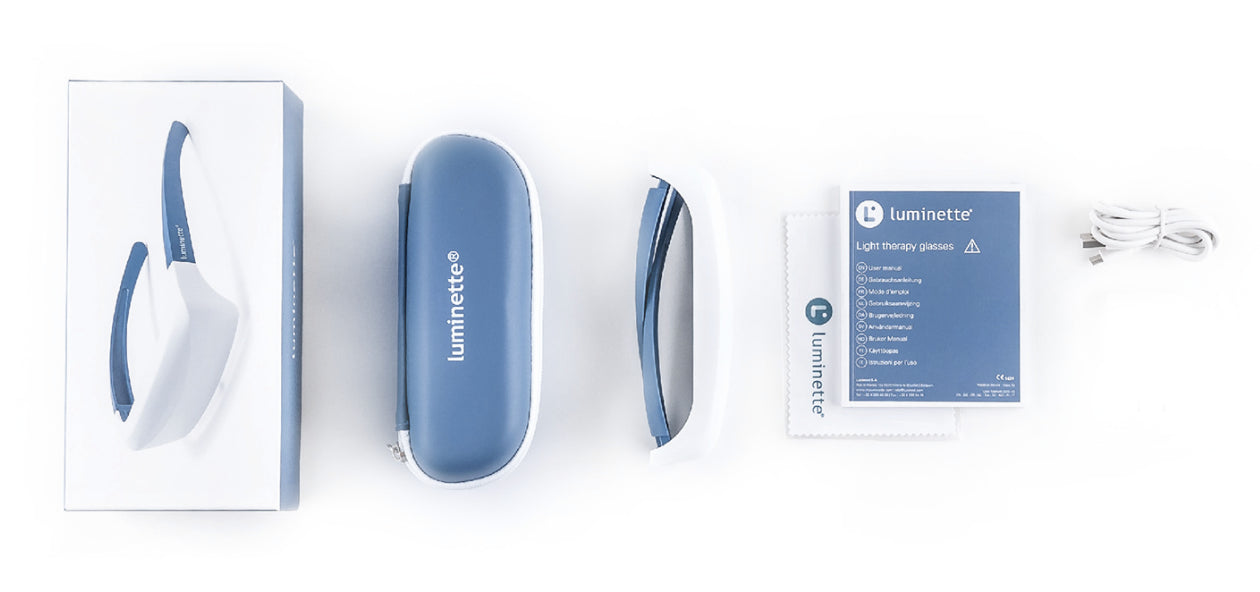
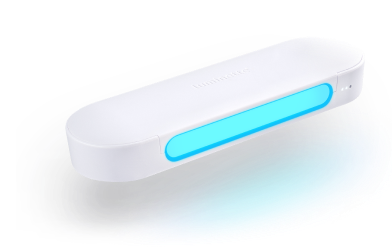
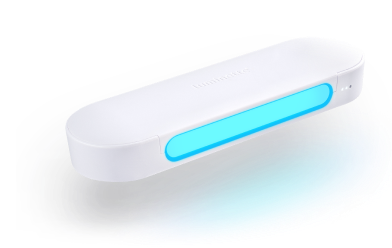

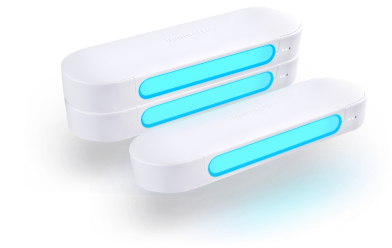
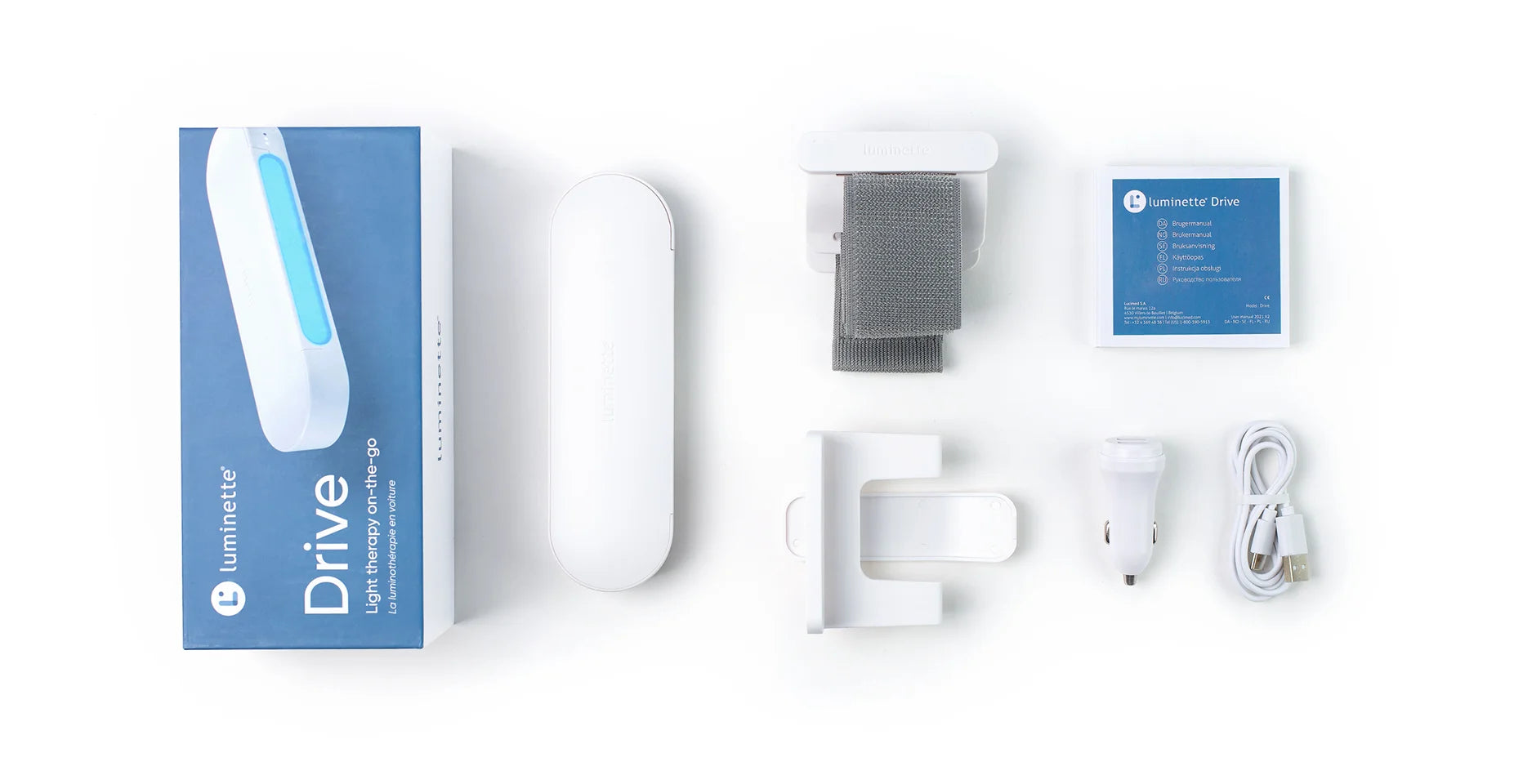

 Please note
Please note



